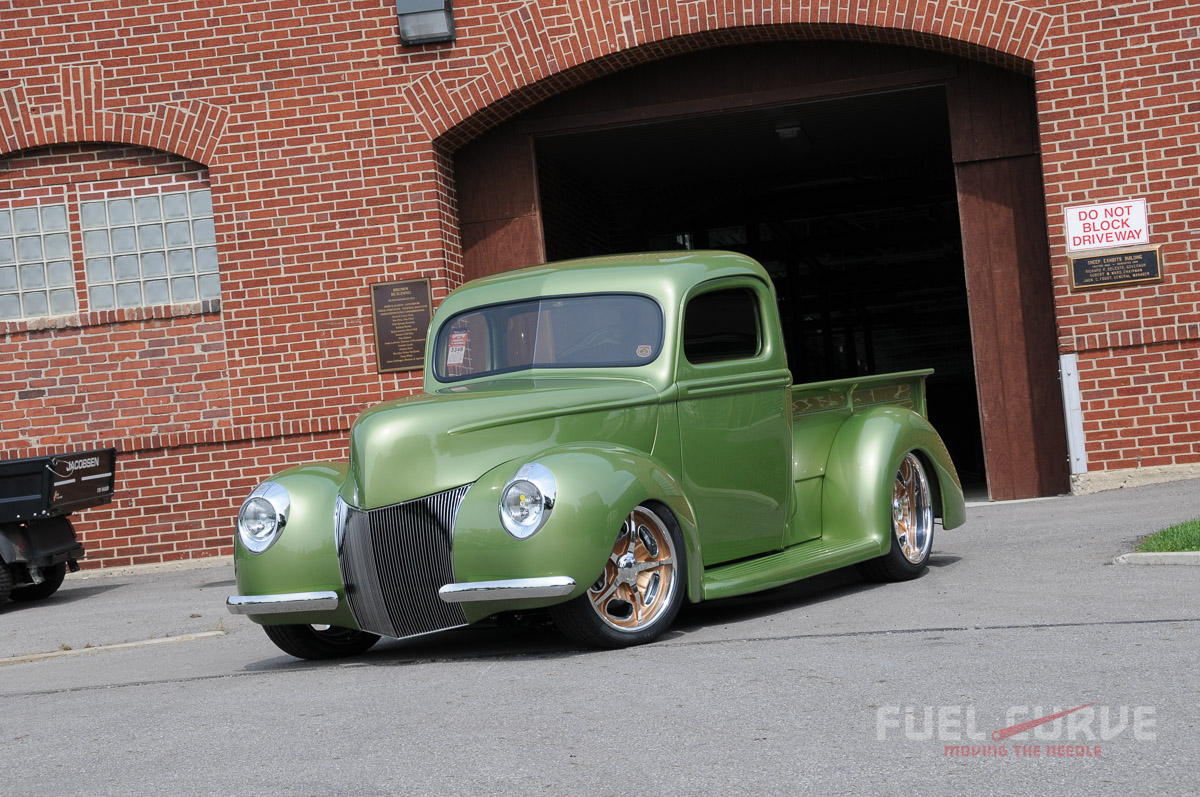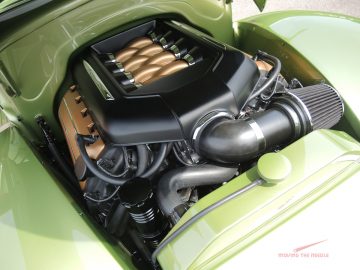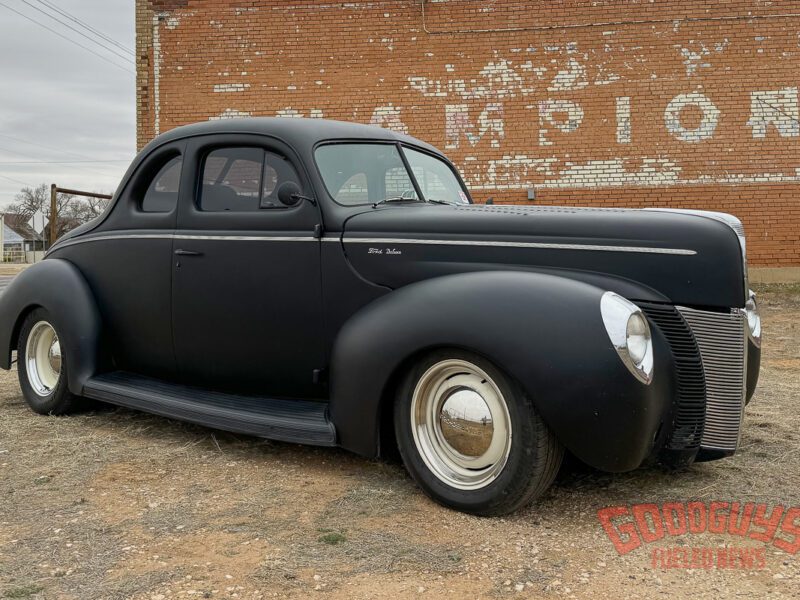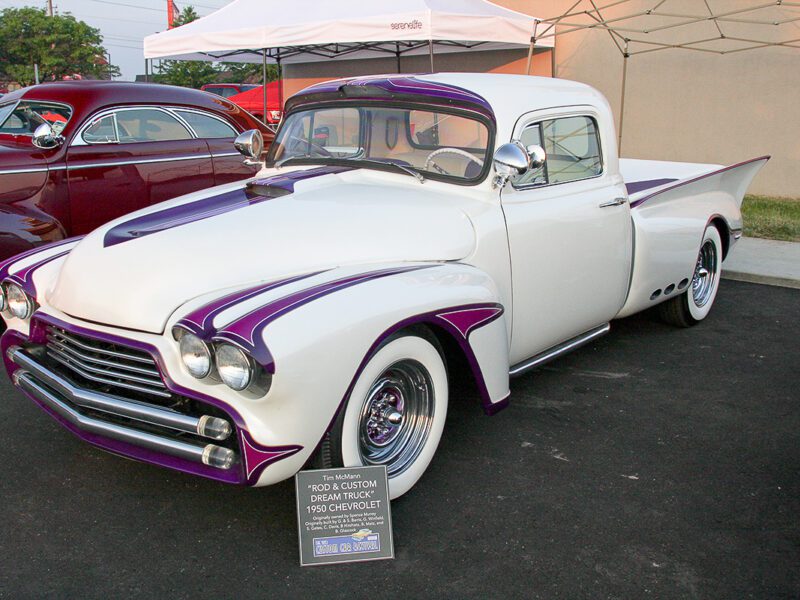1940 Ford Pickup: Sweet and Simple
Written by contributing author Steve Anderson | Photos by Todd Ryden
With so many car builders looking to expand the older molds, the challenge comes in reaching beyond without going too far out, wiping away the character that attracted us in the first place.
Anyone familiar with the works of Legens Hot Rod Shop in Martin, Tennessee, knows the capability of Steve Legens and his team to preserve lines we love while bringing new innovation to one tremendous car after another.
A prime representation of this capability is Robert Anderson’s 1940 Ford pickup. There’s no doubting this truck’s lineage, and yet numerous changes have it standing out in a crowd.
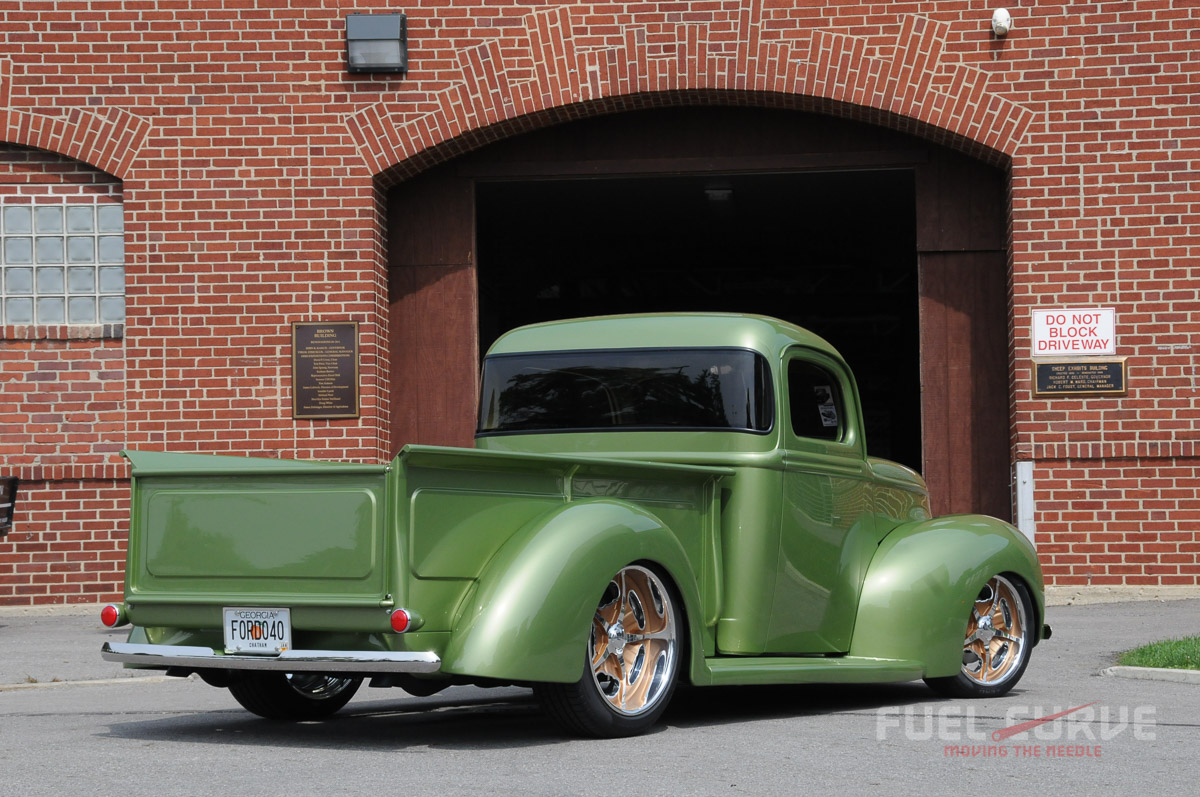
The intent here was subtlety, the smoothed contours of the body and equally rich interior, and a chassis that is as much about function as beauty. Uniting this blend of elements was anything but easy, and yet the union of form and purpose is unmistakable.
To gain perspective on the entire picture, Legens had Eric Brockmeyer work up some illustrations and from that point, craftsmanship took over starting with the chassis – a straightforward package uniting excellent ride quality and deft handling.
The original front suspension was replaced with a more modern approach with TCI tubular A-arms controlled with RideTech’s coilover shocks and sway bars. Flaming River’s rack and pinion steering and Wilwood four-piston calipers with vented rotors manage Schott’s 18×7 Octane rims and 225/40R18 Pirellis in front, while slightly larger 245/45R20’s provide motivation in the back on 20×9-inch rims.
To put performance at the forefront, Anderson decided upon a stout 5.0-liter Ford Coyote engine, and while several shops said it wouldn’t fit, Legens said yes, which is precisely why he was chosen for the build.
A brace of aftermarket components was added to sharpen its bite, including a Borla V8-Stack intake with FAST fuel injection, Ford Motorsports cam and lifter set, EFI updates, and a cold air intake, along with a custom exhaust system venting through MagnaFlow mufflers. When combined with a reinforced 4R70W transmission, there’s no lack of gusto from the “go” pedal.
To provide an environment well suited to the capabilities enabled below, Legens blended cool with comfort in the custom dash from Classic Instruments. It’s based upon a Dodge cluster set in a golden trim panel employing a familiar chevron pattern beneath an eyebrow and leather dash top. Joined with a Flaming River column topped with a leatherwrapped Billet Specialties steering wheel and beautiful seating incorporating die stamped leather with a matching chevron, it’s hard ta imagine a finer place to sit back and put the pedal dawn.
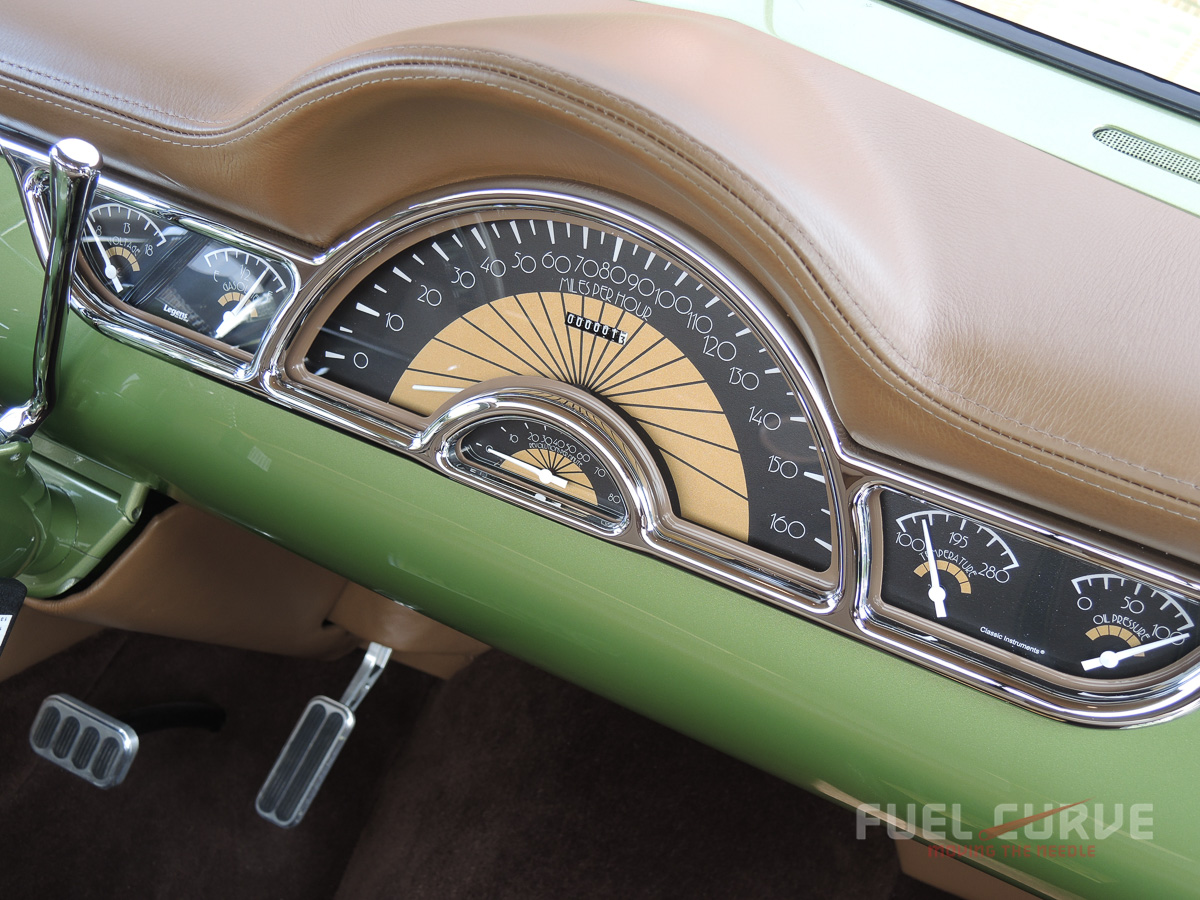
Another special aspect of the interior is actually seen inside and out through a completely unique rear window that is 14-inches high, 55-inches wide, and wraps around both corners more than five inches. The top is chopped slightly and all contours are accentuated through the removal of custom trim pieces. Smooth running boards divide the fenders, as does a beautifully machined grille centered between the bumpers and tapering hood. Other touches from the taillights forward leave little doubt of how the finer points of this truck were retained yet brought forward seventy-five years.
The pickup bed is itself a work of art, representing a great deal of time combining the stunning tiger wood panels with chrome strips. To keep the gas filler out of site, a Legens Hot Rod Shop fuel filler concealment kit was employed, allowing one board to rotate upward 90-degrees with an electric actuator, revealing the gas cap. A 90-degree rotating cam system with a special small detent secures the tailgate. It’s all too cool, and all but invisible.
The only problem comes in trying to enjoy it all, for when you’re tooling down the road, coddled in refinement, cooled by air conditioning, moving with the music, you miss the fine lines splitting the wind and drawing the awe of passersby.
Fortunately, we’re able to take time here and marvel over the simplicity and wonder of how it all has been blended so seamlessly. Indeed, that is what makes the greatest vehicles great, in that its what you can’t see that is appreciated most.
[smartslider3 slider=31]

